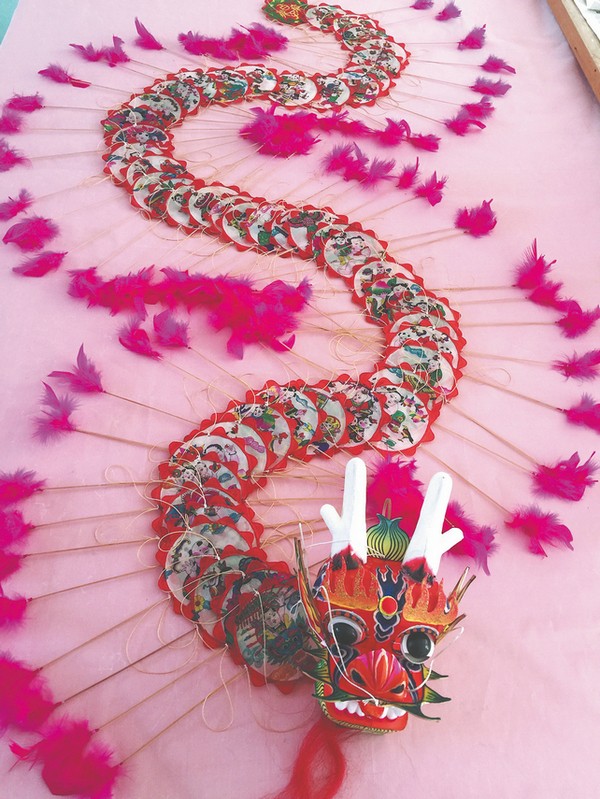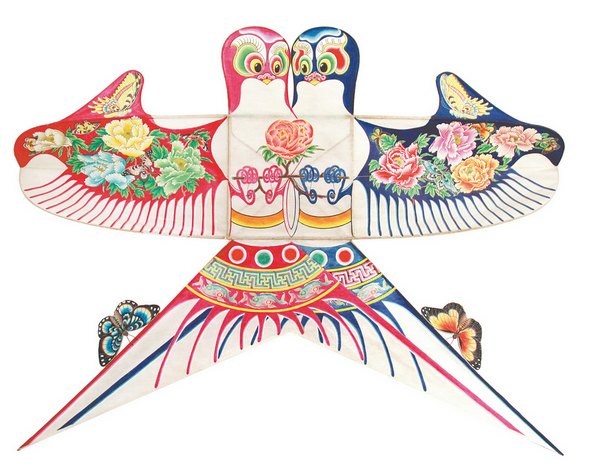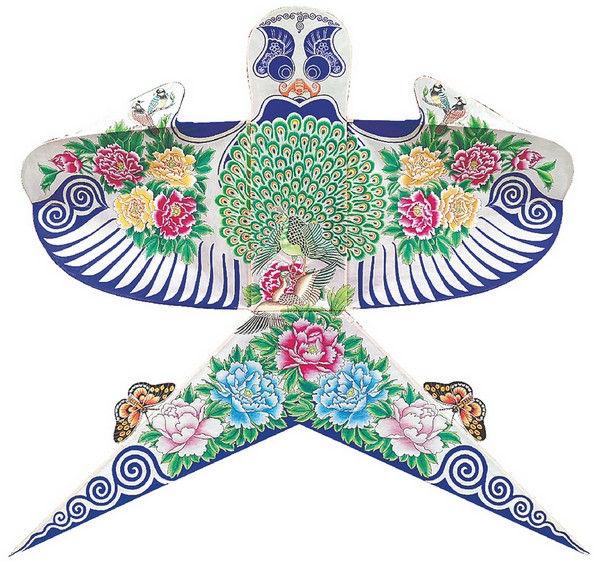Flights of kites
By Cheng Yuezhu| (China Daily)| Updated : 2024-04-30
Print Print
Dragon-headed centipede kites made by Yang Hongwei, a national-level representative inheritor of kite-making techniques in Weifang, Shandong province, which is renowned as the "world capital of kites". [Photo/China Daily]
Flying into the future
Weifang, Beijing, Tianjin and Jiangsu province's Nantong are four major areas that are celebrated for distinctive kite-making techniques. They all boast their own unique features yet share the same dedication to preserving, inheriting and promoting traditional craftsmanship.
In Tianjin, there is a family known as "kite Wei", after late Qing Dynasty virtuoso artisan Wei Yuantai, who's widely known for crafting exquisite, lifelike kites. In 1915, 11 of his works were exhibited and won a gold medal at the Panama-Pacific International Exposition in San Francisco.
The Wei family's fifth generation continues to inherit and perfect the "four techniques" — crafting the frame from roasted split bamboo, pasting such materials as paper and silk onto the frame, painting images on the body and finally flying the kite.
The Wei family is proud to display their raw bamboo frameworks, which are the very basic yet fundamental structures.

A pair of love birds. [Photo/China Daily]
"In my opinion, the main features of our kites are their intricacy and details. We exclusively use the Moso bamboo from Sichuan province, and each frame must be crafted using strips from the same bamboo," says Wei Guoqiu, 63, the fourth-generation and national-level inheritor of "kite Wei".
The thin bamboo strips are carefully roasted over fire and bent to intricate shapes, then joined together by sunmao (mortise-and-tenon) joints to form a three-dimensional framework that's light yet sturdy.
In addition to making kites, Wei Guoqiu also hosts lectures and workshops at schools and universities. His son, Wei Bowen, is now taking up the baton as the fifth-generation inheritor.

A fat bird. [Photo/China Daily]
"We are still seeking innovations, such as changing the traditional models with more streamlined structures," Wei Guoqiu says.
"The kites may vary in size, but we strive to make the small ones vividly lifelike, and the large ones exquisite and unique."
Ma says the "four techniques" are a test of people's temperament, patience and dedication. Only those passing the test can truly become an inheritor of the artisanship.
"Kite making, among other intangible cultural heritage forms' craftsmanship, tests whether the inheritors can persevere in monotonous work and continuously strive to refine their skills. It is, in essence, a process of character-building and self-cultivation," he says.
"From an item as modest as a kite, we can see Chinese people's attachment to the cultural values associated with happiness, positivity and health. This is why the thin string linking us to kites and culture has endured until today and kite flying remains a cherished part of contemporary life."

 Insights from the 10th Nishan Forum
Insights from the 10th Nishan Forum  Confucian culture thrives: Integrating its wisdom into modern value
Confucian culture thrives: Integrating its wisdom into modern value  Confucianism's enduring influence: Shaping East, Southeast Asian civilizations
Confucianism's enduring influence: Shaping East, Southeast Asian civilizations